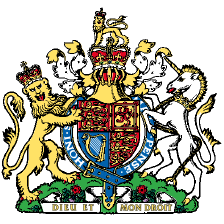 With a much needed government ban on Quercus (Oak) imports coming in a few weeks ago, UK home production of Oak will soon be sold out in larger sizes. Oak Processionary Moth is unfortunately in the UK and will spread alarmingly unless landowners are extremely vigilant to eradicate it as soon as it is detected. At least no more infected imports should come from Holland, Germany or Belgium where the pest has reached epidemic proportions.
With a much needed government ban on Quercus (Oak) imports coming in a few weeks ago, UK home production of Oak will soon be sold out in larger sizes. Oak Processionary Moth is unfortunately in the UK and will spread alarmingly unless landowners are extremely vigilant to eradicate it as soon as it is detected. At least no more infected imports should come from Holland, Germany or Belgium where the pest has reached epidemic proportions.
Good native parkland alternatives include Acer campestre (Field Maple), Carpinus betulus (Hornbeam), Fagus sylvatica (Beech), Populus tremula (Aspen) and Tilia platyphyllos (Broad Leaved Lime). The need for diversity is paramount to futureproof the threat of pest and disease which are often genus specific. Try not to depend on a single genus to account for more than 10% of your planting design.
A lot of us are fixated by planting native trees but with Oak and Ash off the menu it’s like trying to pick a cricket team with only 9 players left to choose from! Climate change, whatever Donald Trump says on the subject, is happening and our native trees may not be the best thing to concentrate on. They have evolved to thrive within a fixed set of parameters and this is swiftly altering.
To achieve a diverse mix of planting, design will have to include some non-native genus. These are well tested and known to thrive within the UK landscape; it’s just a question of using them sympathetically to match the location. Ginkgo biloba (Maidenhair Tree) makes a great city tree but may look rather out of place in a parkland setting. However, Ostrya carpinifolia (Hop Hornbeam) or Zelkova serrata would look absolutely fine if mixed in with our native Lime, Hornbeam and Field Maple in a rural setting.
Acer pseudoplatanus should not be overlooked as a non-native weed. It is hugely successful beautiful parkland tree and without it there wouldn’t be much of a treescape in the Lake District. (Anyway, who is to say it is non-native, there is strong evidence to suggest it pre-dates us in the UK by some margin but we are the ones making the rules…)
Another key thing to get a natural looking treescape right is to match ultimate sizes of trees in the diverse mix you choose. There is little point in coupling up a Hornbeam with an Amelanchier and hoping they will look good together over the longer term and visa versa. If you are after large canopy trees to fulfil an rural landscape pick native and non-native varieties that readily grow beyond 20 metres in height with similar crown habits. Similarly, for your smaller garden areas, concentrate on trees that only get to seven metres ultimately. Either way they are steadily contributing to the environment and gently offsetting what our genus is doing to that…


View all Barcham trees
Bulk discount when you buy any mix of 10 trees or more


